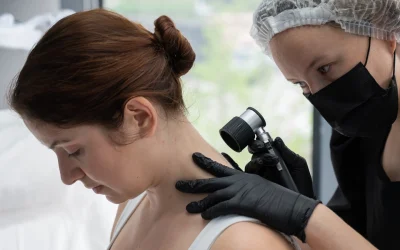The Future of Pediatric Telemedicine: Trends and Predictions
The advent of telemedicine is transforming pediatric healthcare, offering unprecedented access to quality medical services for children everywhere. By leveraging advanced technology, telemedicine transcends geographical barriers, providing critical healthcare access to even the most remote areas. This evolution in pediatric care is more than just convenient; it’s essential, enhancing the reach, efficiency, and effectiveness of medical services for children.
The rise of telemedicine in pediatrics brings numerous benefits, such as virtual consultations that allow parents to seek medical advice from the comfort of their homes, and the availability of specialists for children with rare conditions without the need for extensive travel. Additionally, the integration of sophisticated diagnostic tools like wearable devices, AI, and remote imaging ensures accurate and timely diagnoses, even from afar.
Telemedicine also paves the way for personalized care plans, using continuous monitoring and data collection to tailor treatments to each child’s unique needs. By incorporating mental health services and involving parents more deeply in the care process, telemedicine supports a holistic approach to pediatric healthcare.
The Rise of Telemedicine in Pediatrics
Increased Accessibility and Convenience
Imagine a world where every child, regardless of location, has access to top-notch medical care. Telemedicine is making this a reality. Rural areas, where pediatric specialists are scarce, can now connect with experts in real-time.
- Virtual Consultations: Parents can schedule appointments without leaving their homes.
- 24/7 Availability: Pediatricians can offer after-hours consultations, reducing ER visits.
- Specialist Access: Children with rare conditions can consult specialists without long travel times.
Advanced Diagnostic Tools
Gone are the days when telemedicine was limited to video calls. The future promises sophisticated diagnostic tools that can be used remotely.
- Wearable Devices: Smartwatches and other wearables can monitor vital signs and send real-time data to pediatricians.
- AI and Machine Learning: These technologies can analyze data and provide predictive insights, helping in early diagnosis and treatment planning.
- Remote Imaging: High-resolution imaging tools can be used for detailed examinations, ensuring accurate diagnoses.
Personalized Care Plans
Every child is unique, and so are their healthcare needs. Telemedicine is paving the way for personalized care plans.
- Data-Driven Insights: Continuous monitoring and data collection allow for tailored treatment plans.
- Behavioral Health Integration: Telemedicine platforms can integrate mental health services, addressing the holistic needs of the child.
- Family-Centered Care: Parents and caregivers can be more involved in the care process, ensuring better adherence to treatment plans.
Overcoming Challenges in Pediatric Telemedicine
Ensuring Data Security and Privacy
With great power comes great responsibility. Protecting patient data is paramount.
- Encryption: Ensure all data transmitted is encrypted.
- Compliance: Adhere to HIPAA regulations and other relevant laws.
- Education: Educate parents and caregivers about data security practices.
Bridging the Digital Divide
Not everyone has access to high-speed internet or advanced devices. How can we ensure no child is left behind?
- Community Programs: Initiate programs to provide devices and internet access to underserved communities.
- Telehealth Hubs: Establish local telehealth hubs where families can access services.
- Education and Training: Offer training sessions for families to use telemedicine platforms effectively.
Building Trust and Engagement
Trust is the cornerstone of any healthcare relationship. How can we build and maintain it in a virtual setting?
- Effective Communication: Use clear and empathetic communication to build rapport.
- Consistent Follow-Ups: Regular follow-ups can ensure continuity of care and build trust.
- Patient Education: Provide resources to help families understand the telemedicine process and its benefits.
The Role of Emerging Technologies
Virtual Reality (VR) and Augmented Reality (AR)
Imagine a child undergoing a virtual tour of their upcoming surgery. VR and AR can make this possible.
- Pain Management: VR can be used for distraction therapy during painful procedures.
- Therapeutic Applications: AR can assist in physical therapy exercises, making them more engaging.
- Educational Tools: Both VR and AR can be used to educate children about their conditions and treatments.
Blockchain Technology
Blockchain is more than just a buzzword. It has the potential to revolutionize healthcare data management.
- Secure Data Sharing: Blockchain ensures secure and transparent data sharing between providers.
- Patient Control: Patients and their families can have more control over their health data.
- Interoperability: Blockchain can enhance interoperability between different telemedicine platforms.
Artificial Intelligence (AI)
AI is not just for sci-fi movies. It’s already making waves in healthcare.
- Predictive Analytics: AI can predict potential health issues, allowing for proactive care.
- Virtual Health Assistants: AI-powered chatbots can provide instant answers to common health queries.
- Enhanced Diagnostics: AI algorithms can analyze medical images and other data, assisting in accurate diagnoses.
The Future is Bright
The future of pediatric telemedicine is not just about technology; it’s about improving the quality of care for our youngest patients. By embracing these trends and overcoming challenges, we can ensure that every child receives the best possible care, regardless of where they are.
Ready to learn more? Explore our other resources or schedule a demo to see how our digital health platform can transform your pediatric practice. The future of pediatric telemedicine is here, and it’s brighter than ever!

















